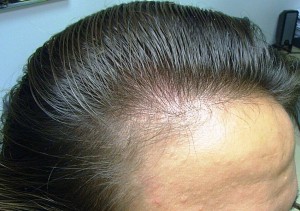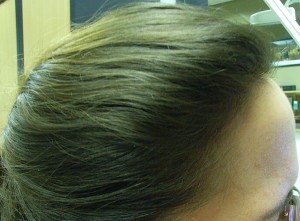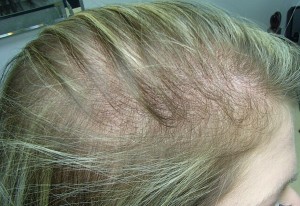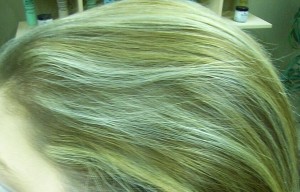Female Hair Loss: Causes and risk factors
12.04.2010 in FEMALE HAIR LOSS, HAIR LOSS [ PHOTOS ] TREATED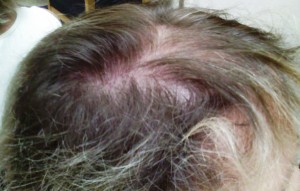
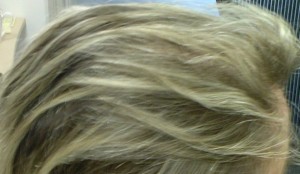
The cause of hair loss in androgentic alopecia is a chemical called dihydrotestosterone, or DHT, which is made from androgens (male hormones that all men and women produce) by the action of an enzyme called 5-alpha reductase.
People with a lot of this enzyme make more DHT, which in excess can cause the hair follicles to make thinner and thinner hair, until eventually they pack up completely.
Women’s pattern of hair loss is different to the typical receding hairline and crown loss in men. Instead, androgenetic alopecia causes a general thinning of women’s hair, with loss predominantly over the top and sides of the head.
Another important cause of hair loss in women is a condition called alopecia areata, an autoimmune disease that affects more than two per cent of the population. In this, the hair follicles are attacked by white blood cells. The follicles then become very small and hair production slows down dramatically, so there may be no visible hair growth for months and years.
After some time, hair may regrow as before, come back in patchy areas, or not regrow at all. The good news is that in every case the hair follicles remain alive and can be switched on again; the bad news is that we don’t yet know how to do this.
Do you have Hair Loss Problems, read our Hair Loss Help





